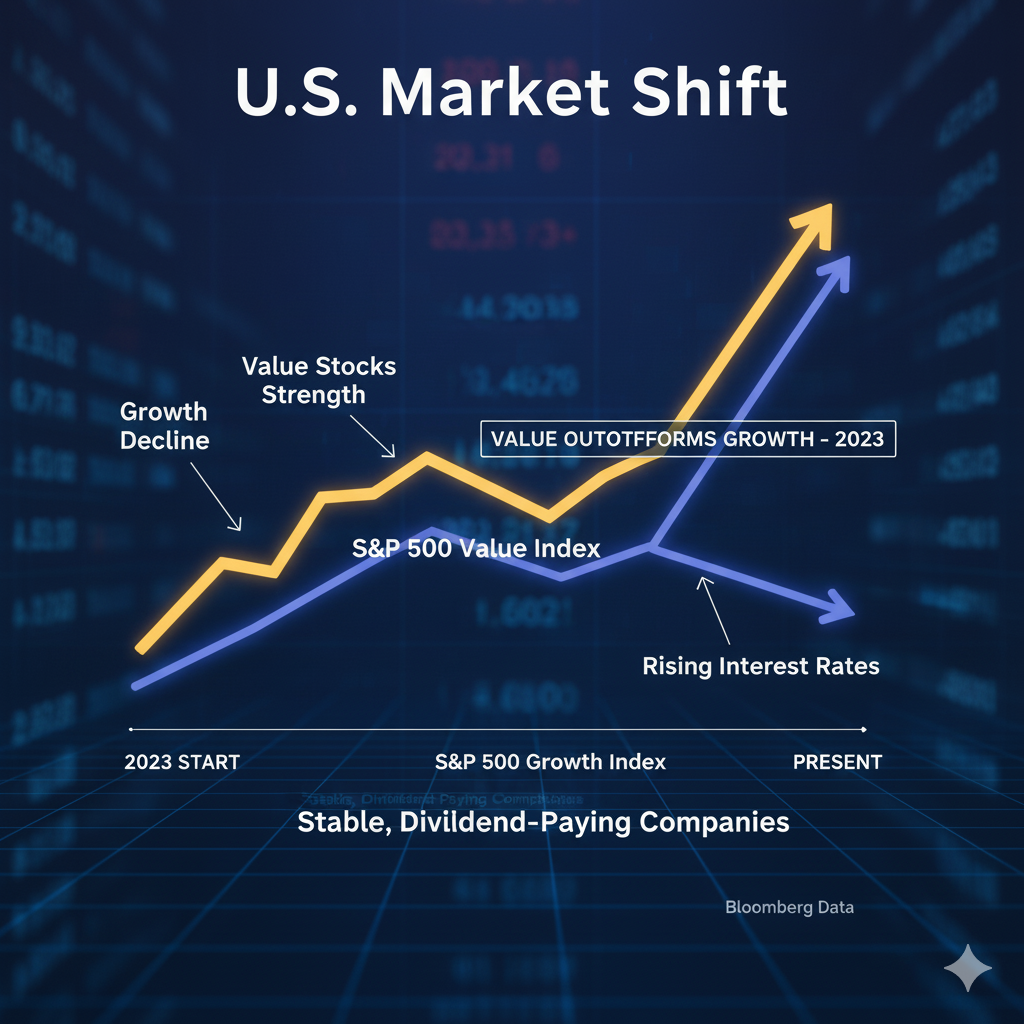
Value Investing: A Time-Tested Strategy
Value investing, a strategy popularized by Benjamin Graham and Warren Buffett, focuses on identifying undervalued stocks with strong fundamentals. This approach has historically outperformed the market over the long term, especially during periods of economic uncertainty. In 2023, with the Federal Reserve continuing to raise interest rates and the economy facing headwinds, value investing is once again gaining traction. According to a report by Morningstar, value stocks have shown resilience in the face of market volatility, making them an attractive option for investors looking to beat the market this year Morningstar.
The Current Market Landscape
The U.S. stock market has experienced significant shifts in recent months. Growth stocks, which dominated the market during the pandemic, have seen a decline as investors become more risk-averse. In contrast, value stocks have started to show signs of strength. The S&P 500 Value Index has outperformed the S&P 500 Growth Index in 2023, indicating a potential shift in market sentiment Bloomberg. This trend is supported by the fact that value stocks tend to perform better in rising interest rate environments, as they are often associated with stable, dividend-paying companies that are less sensitive to economic fluctuations.
Key Sectors for Value Investing
Several sectors are particularly well-suited for value investing in 2023. Financials, energy, and industrials are among the top picks. Financial institutions, for example, benefit from higher interest rates, which can boost their net interest margins. Energy companies, on the other hand, have seen a resurgence due to the global demand for oil and gas. Industrials, particularly those involved in infrastructure and manufacturing, are poised to benefit from government stimulus and economic recovery efforts Reuters.
Identifying Undervalued Stocks
To identify undervalued stocks, investors should focus on metrics such as price-to-earnings (P/E) ratios, price-to-book (P/B) ratios, and dividend yields. These metrics can help pinpoint companies that are trading below their intrinsic value. For instance, a company with a low P/E ratio and a strong earnings growth outlook might be a good candidate for value investing. Additionally, looking at the company’s debt levels, cash flow, and management team can provide further insights into its potential for long-term growth Investopedia.
The Role of Technology in Value Investing
While value investing traditionally focuses on established, stable companies, the integration of technology can enhance the strategy. Advanced data analytics and machine learning algorithms can help investors quickly sift through vast amounts of financial data to identify undervalued opportunities. Platforms like TradingView offer tools that can assist in technical analysis and stock screening, making it easier for investors to make informed decisions TradingView.
Challenges and Risks
Despite its potential, value investing is not without risks. The market can remain irrational for extended periods, and undervalued stocks may take time to realize their true worth. Investors should be prepared for short-term volatility and have a long-term investment horizon. Additionally, the global economic environment and geopolitical tensions can impact the performance of value stocks. It is crucial to stay informed and adjust your portfolio as needed CNBC.
Case Studies: Successful Value Investments in 2023
One notable example of a successful value investment in 2023 is Bank of America (BAC). The stock has outperformed the broader market due to its strong financial position and the benefits of rising interest rates. Another example is ExxonMobil (XOM), which has seen a significant rebound in its stock price as global energy demand continues to grow. These case studies highlight the importance of fundamental analysis and patience in value investing Yahoo Finance.
Building a Diversified Value Portfolio
To maximize the potential of value investing, it is essential to build a diversified portfolio. This means investing in a mix of sectors and companies with varying risk profiles. Diversification can help mitigate the impact of any single stock or sector underperforming. ETFs and mutual funds that focus on value investing can also be a good option for investors who prefer a more hands-off approach Nasdaq.
Staying Informed and Adapting to Market Changes
The key to successful value investing is staying informed and adapting to market changes. Regularly reviewing financial news and reports can help you identify new opportunities and potential risks. Subscribing to newsletters and following financial experts on platforms like Twitter can provide valuable insights. Additionally, using tools like SEC filings to track company performance and regulatory changes can be beneficial SEC.
